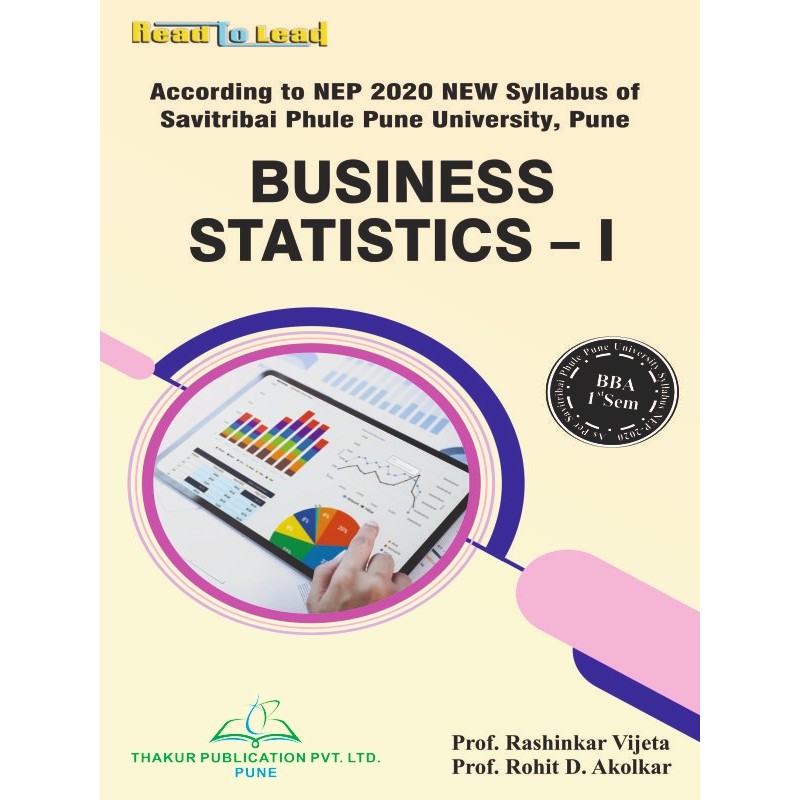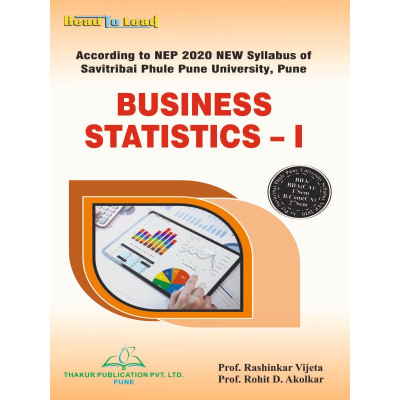Categories
- Pharmacy
-
Nursing
-
MBA
-
BBA
- U.P. State University
- Veer Bahadur Singh Purvanchal University, Jaunpur
- Chaudhary Charan Singh University, Meerut
- Dr. Bhimrao Ambedkar University, Agra
- Chhatrapati Shahu Ji Maharaj University, Kanpur
- Mahatma Jyotiba Phule Rohilkhand University, Bareilly
- Mahatma Gandhi Kashi Vidyapith, Varanasi
- Dr. Ram Manohar Lohia Avadh University, Ayodhya
- Deen Dayal Upadhyaya Gorakhpur University
- Prof. Rajendra Singh (Rajju Bhaiya) University, Prayagraj
-
BCA
- UP State Universities
- University of Pune
- I.K.Gujral Punjab Technical University (PTU)
- University of Rajasthan
- Rashtrasant Tukadoji Maharaj Nagpur University
- Uttar Pradesh NEP2020
- University of Rajasthan ,Jaipur (According to NEP-2020)
- BCCA (B. Com - Computer Science)
- Haryana
- West Bengal
- BBA (CA)
- PUNE BCA (Sci,Commerce)/B.Com (CA)
- Dr. A. P. J. Abdul Kalam Technical University, Lucknow ( AKTU )
- MCA
-
B Ed
- Lucknow University B.Ed Books
- Chaudhary Charan Singh University/Maa Shakambhari University, Saharanpur
- Dr Bhim Rao Ambedkar University, Agra
- Mahatma Gandhi Kashi Vidyapeeth, Varanasi
- Chhatrapati Shahu Ji Maharaj University
- Prof. Rajendra Singh (Rajju Bhaiya) University, Prayagraj (PRSU)
- Mahatma Jyotiba Phule Rohilkhand University(Mjpru), Bareilly
- Dr. Ram Manohar Lohia Avadh University, Ayodhya
- Bundelkhand University, Jhansi
- B.A,B.ed
- B.Sc, B.ed
- Deen Dayal Upadhyaya Gorakhpur University
- Veer Bahadur Purvanchal University (VBPU)
- Maharaja Suhel Dev State University ,Azamgarh (MSDSU)
- Raja Mahendra Pratap Singh State University, Aligarh (RMPSSU)
- Barkatullah Vishwavidyalaya (Bhopal)
- Jiwaji University (Gwalior)
- Vikram University (Ujjain)
- Dr. Harisingh Gour University (Sagar)
- Devi Ahilya Vishwavidyalaya (Indore)
- Rani Durgavati Vishwavidyalaya (Jabalpur)
- Awadhesh Pratap Singh University (Rewa)
- Maharaja Chhatrasal Bundelkhand University (Chhatarpur)
- D. EL. ED
- TET
-
B Com
-
B Sc
- B.Sc. U.P. State Universities Common Syllabus NEP
- Veer Bahadur Singh Purvanchal University, Jaunpur
- University of Lucknow
- Chaudhary Charan Singh University, Meerut
- Madhya Pradesh
- Chhatrapati Shahu Ji Maharaj University, Kanpur
- Dr. Bhimrao Ambedkar University, Agra
- Mahatma Gandhi Kashi Vidyapith, Varanasi
- DEEN DAYAL UPADHYAYA GORAKHPUR UNIVERSITY
- Prof. Rajendra Singh (Rajju Bhaiya) University, Prayagraj
- Dr. Ram Manohar Lohia Avadh University, Ayodhya
- Mahatma Jyotiba Phule Rohilkhand University, Bareilly
- Uttarakhand State Universities
- B.Sc. Bihar Universities Common Syllabus NEP
- University of Rajasthan (Jaipur)
- Haryana
-
Bachelor of Arts [B.A.]
- B.A. Of U.P. State Universities Common Syllabus NEP
- Veer Bahadur Singh Purvanchal University, Jaunpur
- University of Lucknow
- Chaudhary Charan Singh University, Meerut
- Chhatrapati Shahu Ji Maharaj University, Kanpur
- Dr. Bhimrao Ambedkar University, Agra
- Mahatma Gandhi Kashi Vidyapith, Varanasi
- Deen Dayal Upadhyaya Gorakhpur University
- Prof. Rajendra Singh (Rajju Bhaiya) University, Prayagraj
- Dr. Ram Manohar Lohia Avadh University, Ayodhya
- Mahatma Jyotiba Phule Rohilkhand University, Bareilly
- Madhya Pradesh
- Uttarakhand
- Bihar
- University of Rajasthan (Jaipur Syllabus as Per NEP2020)
- Haryana NEP-2020
- B Tech
- LLB
- SWA Education
BUSINESS STATISTICS-I PUNE BBA First Sem

AUTHORS: Prof. Rashinkar Vijeta , Prof. Rohit D.Akolkar
ISBN: 978-93-6180-105-1
₹130.00
Tax excluded
AUTHORS: Prof. Rashinkar Vijeta , Prof. Rohit D.Akolkar
ISBN: 978-93-6180-105-1
University of Pune, BBA, First SemesterSyllabusBUSINESS DEMOGRAPHY AND ENVIRONMENTAL STUDIESCourse Code – 106
| Unit | Contents | No. ofLectures |
| 1 | Introduction of Demography1) Meaning, Definition, Need, Importance and Need of Demography Studies for Business.2) Scope of Demography, Interdisciplinary Approach of Demography.3) Components of Demography – Fertility, Mortality and Migration.4) Measures to Calculate Fertility and Mortality Rate.5) Factors Affecting Fertility and Mortality. | 10 |
| 2 | Distribution of Population and Population Growth1) Meaning of Population, Distribution and Population, Density, Physical and Cultural Factors Affecting the Distribution of Population.2) Concepts of Over, Optimum and Under Population with Suitable Examples.3) Meaning and Definition of Population Growth, Methods of Calculating Population Growth.4) Population Growth inIndiaSince 1901. | 08 |
| 3 | Population as Resource1) Meaning of Resource, Types of Resources.2) Importance of Human Resource in Development and Growth of Business.3) Concept of Literacy – Importance of Literate Population as a Resource.4) Concept of Sex Ratio, Concept of Age and Sex Pyramid, Types of Age and Sex Pyramid, Age and Sex Pyramids of Different Countries.5) Classification of Population – Urban and Rural Population.6) Population Below Poverty Line, Working Population, Dependent Population. | 12 |
| Urbanisation | 06 | |
| 4 | 1) Meaning, Definitions of Urbanisation, Factors Responsible for Urbanisation and Problems of Urbanisation.2) Urbanisation as Behavioural Concept, Structural Concepts and Demographic Concept. | |
| 5 | Environment and Environmental Issues Related to Business1) Meaning and Definition of Environment.2) Types of Environment.3) Physical and Cultural Components of Environment.4) Need of Environmental Studies for Business Management.5) Environment Factors Affecting Business – Physical Factors –Topography, Climate, Minerals, Water Resources; Cultural Factors – Infrastructure – Technology Tradition, Political, Social, Education.6) Global Warming andKyotoProtocol, Oil Crisis and its Impact on Business.7) Problems Related to Water Resources.8) Types of Pollution – Air, Water, Noise – Effects and Causes of Pollution.9) Remedial Measures to Control Pollution.10) Interrelationship between Industrialisation and Pollution. | 12 |
| 12 |
SPPU/BBA/2024/1/06
47 Items
New
9 other products in the same category:
Comments (0)
No customer reviews for the moment.
Your review appreciation cannot be sent
Report comment
Are you sure that you want to report this comment?
Report sent
Your report has been submitted and will be considered by a moderator.
Your report cannot be sent
Write your review
Review sent
Your comment has been submitted and will be available once approved by a moderator.
Your review cannot be sent
Viewed products
Customers who bought this product also bought:
Problem Solving Using C...
Price
₹190.00
AUTHORS : Dr. Rahul A Patil ,Prof.Nutan Prakash Joshi
ISBN : 978-93-89294-093-1
PRINCIPLES OF FINANCE...
Price
₹100.00
AUTHORS : Dr. Thomson Varghese ,Prof. Ankush Atmaram Pingale , Prof. Ankita Harshal Deshpande
ISBN : 978-93-6180-398-7
ENVIRONMENTAL AWARNESS...
Price
₹100.00
AUTHORS : Dr. Vishwas Swami , Dr. Liyakat Rafiq Sayyad
AUTHORS: 978-93-6180-245-4
DEMOCRACY AWARENESS AND...
Price
₹160.00
AUTHORS : Prof. Kakasaheb Madhukar Mule, Prof. Nimbarkar Supriya Girish
ISBN : 978-93-6180-965-1
Principles of Management...
Price
₹220.00
Authors : Dr. Dipak V. Wayal ,Dr. Parashram Gangadhar Kandeker , Perugu Sai Vijetha
ISBN - 9789361808364
Business Communication...
Price
₹100.00
AUTHORS : Dr. Parashram G. Kandekar , Prof. Pritam Chavan
ISBN : 978-93-6180-610-0
PRINCIPLES OF MARKETING...
Price
₹100.00
AUTHORS: Dr. Sharad Kadam ,Dr. Palak Chhablani ,Prof. Vishal Ekatpure
ISBN: 9789361808920
Business Mathematics - I...
Price
₹210.00
AUTHORS: Prof. Inamdar Tarique , Mr. Pawan Ashok Verma
AUTHORS: 9789361803819



















